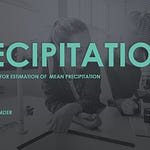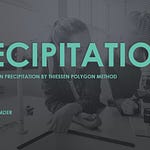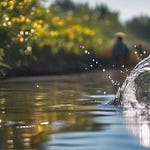Transcript of the Podcast :
(00:00:01):
hello friends how are all of you welcome to another podcast of hydrogeek
(00:00:10):
newsletters so today we will discuss about about a startup i will say not i will i
(00:00:21):
will not say it's a old organization it is a startup which works on
(00:00:30):
water based products actually it provides water based solutions to various water
(00:00:42):
distribution and treatment industries be it government or be it private they with
(00:00:53):
the help of their sensors smart software
(00:00:59):
IoT-based equipments,
(00:01:03):
they try to monitor the water quality of the incoming water and the outgoing water
(00:01:09):
at different stages.
(00:01:11):
And by analyzing the data,
(00:01:13):
they can identify whether any abnormality is there in the entire system of water treatment.
(00:01:26):
Not only water treatment plant,
(00:01:28):
It also provides solutions like water billing,
(00:01:33):
water auditing,
(00:01:35):
water meter,
(00:01:37):
where it measures the water use of the residents of a big high society complex or
(00:01:50):
any other industry.
(00:01:52):
It continuously monitors the water consumption of each of the users there.
(00:01:58):
and then based on that use they produce a report and with the help of that report
(00:02:07):
one can either charge them or include that report in their auditing such that where
(00:02:14):
and how the water is used in that organization,
(00:02:21):
whether any unnecessary use is there or where
(00:02:26):
any sector or any consumer is not getting enough water all these type of
(00:02:32):
uncertainties can be identified or located so basically this company is involved in
(00:02:41):
designing the systems which can also replace the SCADA-based system
(00:02:49):
And they are one of the goal of them is to replace cadaver system where we use CCS
(00:02:56):
central computational system,
(00:02:58):
which is connected to different other computer system.
(00:03:02):
And through those different computers or rather subcomputers,
(00:03:09):
they try to monitor the water quality of a water treatment plant or water distribution.
(00:03:16):
system and all these sub computers has is connected to a sensor placed nearby and
(00:03:25):
by this that ccs actually monitors the entire water system and its quality so if
(00:03:32):
there is any up and down if there is any breaking of the threshold it wants the
(00:03:44):
the subcomputers warn the central computer and central computer to the human user
(00:03:51):
that there is a problem in here.
(00:03:53):
But this entire system is extremely costly as we all know and this organization is
(00:04:00):
trying to reduce that cost by employing or installing sensors in the entire path of
(00:04:08):
the water from input to the output.
(00:04:12):
And then what it do is the sensors stand alone.
(00:04:19):
It measures the quality of water and also the quantity.
(00:04:25):
And this measurement is fed to the internet enabled computers,
(00:04:34):
be it mobile,
(00:04:35):
be it smartphone,
(00:04:36):
be it desktop,
(00:04:37):
be it pad,
(00:04:39):
anything.
(00:04:44):
You can monitor from any device of your choice and it will monitor it because all
(00:04:52):
these monitoring and analytic applications are stored in the app,
(00:05:00):
are embedded in the app.
(00:05:01):
If you download an app in your system, whether it is pad or smartphone or desktop also,
(00:05:08):
Then through that app you can connect to the sensor and constantly real time you
(00:05:14):
can monitor the valuation of water quality throughout the flow path.
(00:05:19):
Because that is one of the main problem of water treatment plants because suddenly
(00:05:25):
the water quality changes.
(00:05:27):
And if you do not adjust your chemical dosing as per those changes,
(00:05:33):
then either overdose may occur or underdose may occur.
(00:05:38):
So both way it will create some deterioration in the standard quality of water.
(00:05:48):
So with this automated system, with the sensors, you are able to monitor the water quality in real time.
(00:06:01):
And not only water quality, but also water flow.
(00:06:04):
So this is one vertical of this organization.
(00:06:08):
Another vertical is smart metering that I had said,
(00:06:13):
water accounting or water editing,
(00:06:15):
auditing,
(00:06:17):
rather it is,
(00:06:19):
water auditing will be the suitable word for this.
(00:06:26):
So,
(00:06:30):
As for example,
(00:06:32):
if you take some example of this company,
(00:06:37):
they have recently,
(00:06:38):
in Tamil Nadu,
(00:06:39):
there is a panchayat known as Tiruchendur,
(00:06:44):
where they have installed some water management system,
(00:06:49):
which they refer as AMRIT,
(00:06:51):
A-A-M-R,
(00:06:59):
AMR, I think it is AMR UIT.
(00:07:05):
So this AMRIT system is installed in this,
(00:07:09):
those panchayats for smart monitoring of the water quality and also the quantity,
(00:07:17):
both way they monitor,
(00:07:19):
right?
(00:07:21):
So this is one example of the real time implementation of their product.
(00:07:28):
So another is,
(00:07:31):
there is a chemical industry in Tamil Nadu known as Gigi K.
(00:07:38):
So there they have also installed a water management system which reduce the
(00:07:46):
infrastructure cost for real-time monitoring over the SCADA.
(00:07:52):
They were utilizing SCADA, but when CAR-IoT installed their own system,
(00:07:58):
cost of real-time monitoring was reduced by 60%.
(00:08:05):
What this real-time monitoring system do?
(00:08:08):
They provide real-time data via cloud server, right?
(00:08:12):
And it is accessible through web and also mobile device.
(00:08:15):
You have to download an app, okay?
(00:08:19):
And they enable you to observe or watch the ship based reports also.
(00:08:26):
And the main advantage of implementing their system is that this system also alert
(00:08:36):
you whenever there is some uncertainty like leak or quality deterioration in the
(00:08:46):
treated water.
(00:08:48):
So, they have a system of automated alerting.
(00:08:52):
They can alert you whenever there is some vulnerability.
(00:08:56):
And Car IOT has also installed a water billing and management system in Ganesh Tower,
(00:09:02):
a shopping complex,
(00:09:04):
right?
(00:09:05):
And this is located in Tirupur.
(00:09:08):
And the earlier system, that chemical industry is located in Tutikorin.
(00:09:16):
Okay.
(00:09:18):
So Ganesh Tower utilizes that where at first they will collect data for different
(00:09:24):
types of water consumption.
(00:09:27):
Then they install the pulse meter which can monitor the water use.
(00:09:35):
And then they calculate the water consumption for each floor,
(00:09:39):
each consumer and each commercial building if there are more than one.
(00:09:45):
And after then due to their smart monitoring system,
(00:09:49):
which they enabled by asking you to install an app into your tab or mobile or this
(00:09:58):
desktop and through that they can analyze the data and you can understand where the
(00:10:07):
weak point are and how much water cost is there to your organization.
(00:10:13):
Okay.
(00:10:14):
so this is another thing they have done so another company is their wastewater
(00:10:21):
treatment plant it hex okay so in heck industry which is located in sri perumbadur
(00:10:33):
here also they replace the skada system and the system which is installed in that
(00:10:45):
the same system was installed in HECS also.
(00:10:53):
HECS means H-E-C-S, HECS industry.
(00:10:58):
So the same thing is done there.
(00:11:02):
This is an organization which treats wastewater and supply to different consumers.
(00:11:08):
So the reporting, the real-time reporting is now
(00:11:12):
through their IoT product where sensors are connected through internet or rather I
(00:11:19):
will say cloud to your app and which app when installed in mobile or desktop,
(00:11:26):
you can monitor,
(00:11:27):
analyze the entire water use of this wastewater treatment plant.
(00:11:35):
So basically they are into innovative water
(00:11:39):
management solution such that you can save not only money but also water because
(00:11:45):
water is scarce as you see there are lots of climatic abnormality going on in our
(00:11:51):
world and some place there are excess water and some places there is no water at
(00:11:56):
all so they are trying to conserve water which is a very good thing and it is
(00:12:03):
incorporated in the sustainable development goal fixed by the european union
(00:12:09):
few years back okay and they have a large clientele lots of clients is there few of
(00:12:15):
them i have already discussed this gigi cake chemical industry then ganesh tower
(00:12:24):
shopping mall wastewater treatment plant by hex panchayat so there are many other
(00:12:32):
system where their verticals are being used okay
(00:12:38):
So I have not yet told you the name of that organization or startup which is
(00:12:45):
working for the water industry for a long time now.
(00:12:50):
And so basically their offering is that their main vertical is IoT enabled smart
(00:13:00):
water management system that monitors the quality and quantity of water in real
(00:13:06):
time
(00:13:07):
for residential, commercial and industrial sector.
(00:13:12):
Okay.
(00:13:12):
So, this is the main objective of the company.
(00:13:17):
Okay.
(00:13:18):
So,
(00:13:19):
yes,
(00:13:20):
as I have said,
(00:13:20):
they are located in this Tamil Nadu and they are very,
(00:13:33):
they are quite old compared to other startups.
(00:13:39):
Okay,
(00:13:39):
I will not say that they are very old,
(00:13:43):
but if I compare to the recent startup,
(00:13:48):
which is a trend in the last five years,
(00:13:51):
with respect to that,
(00:13:52):
this startup is quite old.
(00:13:55):
It is in the field for a long time.
(00:13:58):
Okay, so the name of the organization is CARIOT.
(00:14:02):
K-A-R-I-O-T.
(00:14:05):
So this is the name of the organization.
(00:14:08):
It is located in the Tamil Nadu.
(00:14:10):
I have already said it.
(00:14:13):
And the entire name of the organization is,
(00:14:20):
which is recognized by the start of India is Car IoT Solutions Private Limited.
(00:14:27):
So this is basically the name of the organization recognized by this
(00:14:36):
total, I would say.
(00:14:39):
Okay,
(00:14:42):
so in short,
(00:14:43):
I have discussed all the verticals,
(00:14:45):
I have discussed about the projects which are already completed by them and also
(00:14:52):
some case studies I have discussed with you.
(00:14:56):
But now my point is that who are their opponents?
(00:15:02):
Who can be the or with whom this company competes?
(00:15:10):
That would be a good, meaningful sentence, I think.
(00:15:16):
So their main competitor that I understood from the
(00:15:25):
various data that is available in the market.
(00:15:33):
Their main competitor is WEGOT and then Krishnam technologies
(00:15:56):
Digital Eco Innovation,
(00:15:59):
Vassal Labs and Ekattam and there are many more but directly they are competitor of
(00:16:08):
this five organization.
(00:16:10):
Why?
(00:16:11):
Because we got also provide the IoT based water management and they are proprietary IoT devices.
(00:16:18):
They are not sourcing it from any other organization like this our car IoT is doing.
(00:16:27):
and they have been able to reduce the water demand by more than 50%.
(00:16:38):
And if I take the example of Cripsnum Technologies,
(00:16:44):
this startup offers water management solutions to government and bulk water issues
(00:16:49):
using IoT-enabled ground sensors
(00:16:52):
they also use the remote sensing and user input data they allow user can also input
(00:16:58):
data for sustainable use of fresh water for agriculture and mainly agriculture I
(00:17:06):
will say right but also for drinking purposes another one is digital eco innovation
(00:17:15):
so this organization offer IoT and software powered management tool
(00:17:19):
to transform plants from non-functional to treating 100% of sewage to high quality standards.
(00:17:29):
So this person is already saving 20% energy and 50% labor cost.
(00:17:41):
So another, the last one, last organization that can compete with Karoati in one vertical only
(00:17:49):
It is Ekattwa.
(00:17:51):
They also offer a water accounting service, right?
(00:17:55):
And there are many more organizations, but they are loosely related with Card IoT.
(00:17:59):
They are not direct competitors.
(00:18:01):
But these five are more or less directly,
(00:18:07):
they may be directly involved with Card IoT because both of them provide the same solution,
(00:18:15):
right?
(00:18:17):
so however this is the competition they have this card iot and which are the
(00:18:24):
prospective client as you can understand from the case studies water treatment at
(00:18:30):
distribution organizations big residential complexes gram plantations industries
(00:18:37):
which use water as the raw material and
(00:18:42):
various distribution companies,
(00:18:45):
electricity distribution companies,
(00:18:48):
because they need water also,
(00:18:50):
but in a very smart way,
(00:18:53):
right?
(00:18:54):
So otherwise,
(00:18:56):
the power generation can be altered,
(00:18:59):
or if there is a leak of water within a thermal power plant,
(00:19:04):
catastrophe can occur,
(00:19:05):
accidents can occur.
(00:19:07):
So that is why this DISCOM,
(00:19:11):
DISCOM is a short form of distribution companies,
(00:19:14):
but not only DISCOM,
(00:19:16):
but GENCOM,
(00:19:17):
generation companies,
(00:19:18):
and TRANSCOM,
(00:19:19):
transmission companies,
(00:19:23):
they can also use the services of car IoT for their benefit.
(00:19:26):
Because it will only prevent the accidents and abnormalities that may take place in
(00:19:32):
these old water pipes.
(00:19:36):
Because generally, government water treatment plant
(00:19:40):
supplies treated water through very old pipes.
(00:19:48):
What is the relation between pipe and electric wire?
(00:19:51):
The analogy if you make with water pipe and electric wire,
(00:19:57):
you will see more or less their shape,
(00:20:01):
their properties are same,
(00:20:02):
but their shape and size is different.
(00:20:05):
also type is also different but the main property basic property of carrying water
(00:20:11):
for pipes and carrying electricity for electrical wires are same okay so if uh
(00:20:19):
there is any vulnerability is there if there is any abnormality in the water
(00:20:23):
distribution then it must be detected very early that is why the services of iot
(00:20:29):
could be very very useful right so this is more or less what i want to told you
(00:20:37):
today and now i am planning to give a feature on some very popular startup working
(00:20:49):
in the water field
(00:20:52):
uh like today i have discussed about car iot and next week same day same time i am
(00:20:59):
pondering i have not uh already planned but it is still in consideration but yes 90
(00:21:07):
there is a chance that i will again discuss about some another innovative solution
(00:21:14):
on which an organization is trying to profit
(00:21:21):
and also which was installed in the last 10 to installments, started its operation in the last decade.
(00:21:29):
Okay.
(00:21:31):
So with this, I finish this podcast.
(00:21:34):
Please comment.
(00:21:35):
Please like if you like it.
(00:21:38):
And you comment if you have any observations or objection with what I have told you.
(00:21:45):
Thank you for now.
(00:21:47):
Rather, thank you and bye for now.
(00:21:49):
Sorry.
(00:21:51):
So good day and goodbye.











